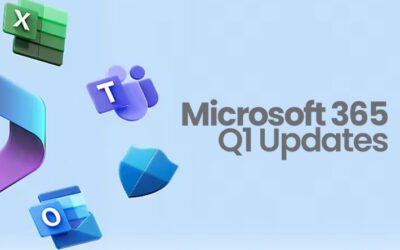
Challenge #6
Implement Malware Alerting System
Strengthen your internal security with a malware alerting system in Microsoft 365. Be instantly informed when internal users send malware-infected files.

Why?
Cybersecurity isn’t just about warding off external threats; it’s equally crucial to keep an eye on what happens inside your digital domain. Despite having a robust external defense with Exchange Online Protection (EOP), internal threats, often accidental, can pose a significant risk. Imagine a situation where an employee unknowingly sends a malware-infected file. Without immediate detection, this can escalate into a substantial security breach.
This is where an internal malware alerting system becomes invaluable. It acts like a vigilant sentinel, immediately informing your IT security team if such an incident occurs. This rapid response system isn’t just about reacting to threats; it’s a proactive tool for swift action and thorough investigation. It ensures that a minor incident doesn’t snowball into a major crisis. By implementing this, you involve everyone in your organization in the collective effort of maintaining cybersecurity, reinforcing the idea that security is a shared responsibility.
How?
Activating a malware alerting system in Microsoft 365 is a straightforward process. Here’s how you can set it up to keep your internal communications secure:
Step 1: Go to the Microsoft 365 Defender Portal
On your computer, launch a new browser window (Edge, Chrome), and type in https://security.microsoft.com/ and press enter.
Note: You will require Microsoft 365 administrative credentials – be sure to have the username and password ready.
Step 2: Adjust Email & Collaboration Policies
Within the Microsoft Defender Center:
- Look for and select Email & Collaboration along the left-hand side menu
- Under Email & Collaboration, look for and select Policies & rules
- In the Policies & rules window, select Threat policies
Step 3: Edit Anti-malware Settings
- Within the Threat policies window, under Policies, find and select Anti-malware
- Within the Anti-malware window, select the Default (Default) policy
Step 4: Configure Notifications
- Now with the Default policy open, scroll down and select Edit protection settings
- Under Notifications and Admin notifications, check the box to Notify an admin about undelivered messages from internal senders
- Now specific an admin email address to receive the notifications and alerts
- If you’d like, you could also enable customized notification text but, for now, you’ll be fine with just the default notifications
Step 5: Save Your Settings
- Once you are satisfied, click Save.
While you’re here…
Microsoft 365 and DIY: What to Consider
Considering a move to Microsoft 365? Thinking of doing it yourself? Read this first.
Microsoft 365 and Google Workspace – A Comparison
No matter what kind of business you're running, there's a good chance some of your team members need tools to work better. We used to call this an office suite, and Microsoft Office was the only option. However, the concept has become more advanced over the past...
What’s New in Microsoft 365 for Q1 2023
Discover the latest Microsoft 365 updates for Q1, designed to simplify your work in an easy-to-understand, non-technical overview.


